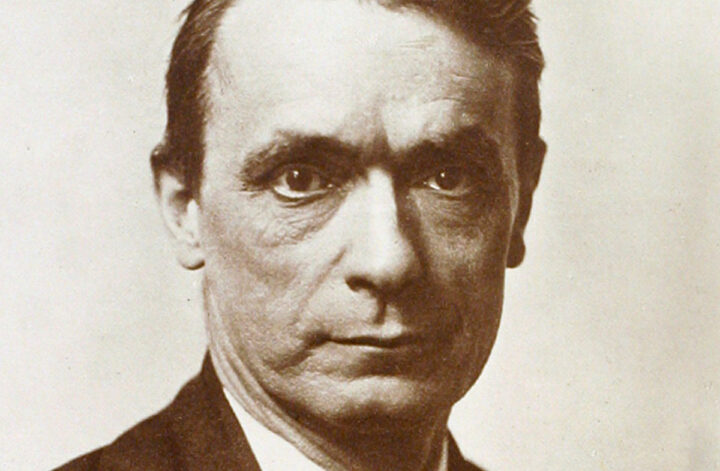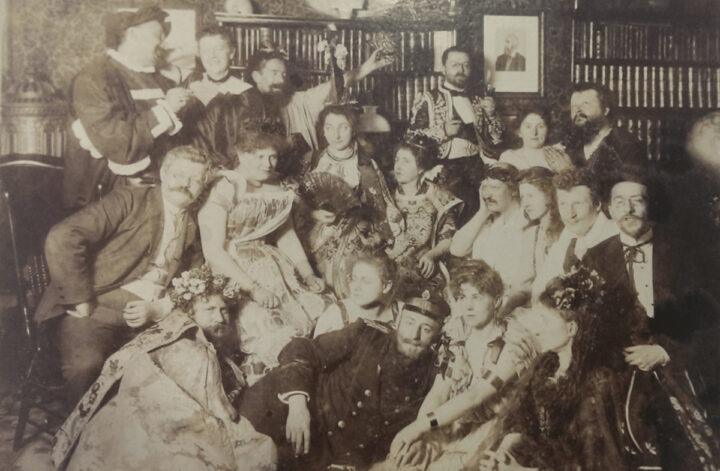How can you tell what a Waldorf school is up to? Can we distinguish a “good” Waldorf school from a “bad” one? Waldorf schools tend to be generally alike, although they may differ from one another in subtle — yet important — ways. Consider the key issue of occultism. Very few Waldorf schools openly acknowledge that they are devoted to occultism. This denial may be approximately true at some Waldorf schools; but in many other cases, it is surely not true. How can you tell whether unspoken occult beliefs are present in any particular Waldorf school?
Here’s a primer, a guide to clues you can look for when evaluating Waldorf schools. I’ve written it with a specific audience in mind: my family and myself as we were years ago. This is the advice I wish someone had given us when my parents were thinking about sending me to a Waldorf school. This is what we would have been well advised to consider.
BACKGROUND
A primer should take nothing for granted, so let’s start with the basics. (If this background material is familiar to you, please skip ahead to the next section: “Overview”.)
Rudolf Steiner was a mystic. He invented his own religion, which he called Anthroposophy (pronounced “an-throw-POS-o-fee” — the word means human wisdom). He pieced his religion together from bits and pieces of other spiritualistic systems, primarily Theosophy — which is, itself, a syncretic blend of faiths.
Steiner claimed that Anthroposophy is a science, not a religion, but this is just one of many claims he made that are demonstrably false. Anthroposophy is a belief system that is designed to lead people to spiritual salvation. The path toward salvation as laid out by Steiner involves gaining spiritual insight through the use of clairvoyance. Steiner prescribed special prayers, spiritual exercises, and other spiritually oriented activities to use along the way. Without a doubt, this all adds up to religion. [If you want to investigate this further, see “Is Anthroposophy a Religion?”. To consider whether Anthroposophy is a science, see “Steiner’s ‘Science’”.]
Not long after he created his religion, Steiner set up the first Waldorf school — in Germany, during the early part of the 20th century. There was a direct link between Steiner’s religion and his plans for the school. In fact, Steiner wanted to use the school to spread the religion. When he realized that his efforts seemed to be paying off, he said this:
“One of the most important facts about the background of the Waldorf School is that we were in a position to make the anthroposophical movement a relatively large one. The anthroposophical movement has become a large one.” [1]
Steiner’s clear meaning is that by setting up the school — which evolved into today’s Waldorf school system — he was able to spread Anthroposophy.
Steiner laid down distinct standards for Waldorf faculty members. He told the teachers at the first Waldorf school this:
“As Waldorf teachers, we must be true anthroposophists in the deepest sense of the word in our innermost feeling.” [2]
On another occasion, he explicitly linked the school’s spiritual work with the staffing policies of the school:
“As far as our school is concerned, the actual spiritual life can be present only because its staff consists of anthroposophists.” [3]
For Steiner, the “actual spiritual life” or real spirituality belongs in a Waldorf school, and it can be there only because the staff members embrace his occult doctrines — they are Anthroposophists.
Here’s how Steiner summarized his intentions for Waldorf teachers:
“Among the faculty, we must certainly carry within us the knowledge that we are not here for our own sakes, but to carry out the divine cosmic plan. We should always remember that when we do something, we are actually carrying out the intentions of the gods, that we are, in a certain sense, the means by which that streaming down from above will go out into the world.” [4]
Let that sink in. Waldorf teachers are supposed to carry out the intentions of the “gods.” Steiner taught that there are many gods, not just one; he claimed to know what the gods want, what their “divine cosmic plan” is; and he told Waldorf teachers that their job is to fulfill that plan. The task of the faculty, in other words, is messianic. In spreading Anthroposophy, Waldorf teachers take the gods’ influences and send them out into the world. They do this primarily through their educational work, fostering “the actual spiritual life” in the souls of their students. They are missionaries.
Steiner’s intentions may be acceptable to parents who want their children to be brought up as junior Anthroposophists. But parents who don’t embrace Anthroposophy should think carefully before becoming involved in a Waldorf school. Steiner was, sometimes, reasonably open about the role Anthroposophy should play in a Waldorf school:
“Anthroposophy will be in the school.” [5]
But on many other occasions, he told Waldorf teachers to hide their beliefs from outsiders, including the students’ parents. The teachers should work on their students’ souls, but they should so this quietly, indirectly. Steiner knew his belief system contained elements that would turn off many people and even incite opposition, so he urged his followers to be cagey. [See “Secrets“.]
Steiner told Waldorf teachers to keep quiet about many things, including the prayers he wanted students to recite each morning.
“We also need to speak about a prayer. I ask only one thing of you. You see, in such things everything depends upon the external appearances. Never call a verse a prayer, call it an opening verse before school. Avoid allowing anyone to hear you, as a faculty member, using the word ‘prayer.’” [6]
In a more shocking example, he told Waldorf teachers to conceal a particularly appalling doctrine:
“That little girl L.K. in the first grade must have something really very wrong inside. There is not much we can do. Such cases are increasing in which children are born with a human form, but are not really human beings … I do not like to talk about such things since we have often been attacked even without them. Imagine what people would say if they heard that we say there are people who are not human beings.” [7]
Here in the Waldorf school, we believe that some people are subhuman. But keep quiet, Waldorf teachers. Don’t tell outsiders what we believe. Be circumspect as you go about your work, promoting Anthroposophy.
These were Rudolf Steiner’s stated intentions. His intentions have not always been fulfilled. Not all teachers at Waldorf schools today are Anthroposophists. Not all Waldorf schools today promote Anthroposophy vigorously. But many do. The problem for parents is determining which do.
If a Waldorf school today wants to follow Steiner’s intentions, the teachers will almost certainly not proselytize openly for Anthroposophy within the school’s walls. But in subtle ways, Anthroposophy will fill the school. The curriculum will probably emphasize myths, and a particular kind of dance, and a special sort of painting, and spirit-affecting music and books and activities… Powerful, subliminal forms of persuasion will probably be used to indirectly convey such doctrines as reincarnation, karma, spiritual evolution, magic, Atlantis, astrology… Academic subjects will probably be downplayed, while considerable class time will be spent on knitting, gardening, woodworking, playing simple woodwind instruments…
Those are some of the clues that can reveal a Waldorf school’s real purposes. Below is a more inclusive list. I’ll give you the list twice, first in a quick overview, then in detail.
OVERVIEW
Here is a series of questions that should help reveal whether or not a school is deeply committed to Rudolf Steiner’s occultism. If you are considering becoming involved with a Waldorf school, I would encourage you to seek answers to these questions.*
1. Does the school call itself nondenominational or nonsectarian, but does it contain indications of religious faith?
2. Do the teachers require or urge students to recite a morning verse? Does the “verse” address God? Who wrote it?
3. Does the school emphasize Christ? But do you also detect hints of unbiblical beliefs?
4. Do students at the school study various religions?
5. Does the curriculum at the school include extensive study of myths and legends?
6. Is there a pleasant emphasis on art, but with a spiritualistic flavor?
7. Do the students do wet-on-wet watercolor painting?
8. Is eurythmy performed at the school?
9. Are academic subjects given short shrift?
10. Are there indications that intellect is downplayed and other kinds of thinking — such as imagination — are stressed instead?
11. Is there an antiscientific bias at the school?
12. Is alternative medicine present in or around the school?
13. Are there hints of racism, perhaps buried deep but still detectable?
14. Is European culture, especially German culture, seen as superior to all others?
15. Can you detect an unusual degree of sexism in the school’s policies or practices?
16. Do the teachers divide the students according to “temperament”?
17. Are there any strangely suggestive features in the school’s building, grounds, or paraphernalia?
18. Are there intimations that evolution is real, but very different from Darwin’s version?
19. How are animals discussed or viewed?
20. Are students led to feel that the physical world is illusory? Are there indications that nature is deemed holy and yet false?
21. Are there gnome statuettes or dolls in any classrooms at the school?
22. How are other worlds discussed or portrayed?
23. Are there indications of astrology or related fallacies in the school?
24. Are there hints of belief in reincarnation? What about karma?
25. Are there suggestions that children have memories of the spirit realm?
26. Beyond whatever the previous questions exposed, do you detect signs of occultism?
27. Are there hints that the universe may have more than one god?
If careful investigation convinces you that a particular Waldorf school passes muster on these questions — if no worrisome discoveries pop up — then that school may be just fine as far as Waldorf schools go.
But if the questions lead you to troubling disclosures, then you may want to find a different school for your children.
Below are pointers that may help you penetrate to the truth behind these questions.
* The first version of this page appeared online some years ago. Waldorf schools have had plenty of time to absorb it and similar materials, and to adjust the face they present to the world accordingly. Still, the information and suggestions offered here should remain pertinent for parents making their own inquiries.
CLUES, REDUX
Here is the same list of topics, taken more slowly this time. Essentially, all of these topics down boil to one large question about any Waldorf school that catches your attention: To what degree is the school committed to Rudolf Steiner’s occult doctrines?
As I proceed down the list, I will include many quotations from Steiner and others. Some of these quotations are hard to grasp, but I think you will find the effort worthwhile. Such quotations may be your best tool for investigating a Waldorf school. Take such quotations to the school and ask for explanations. If you are dissatisfied with the answers you receive, you may have learned something essential. A tip: Don’t settle for simple denials — press for full, persuasive answers. Remember that Steiner told his followers to guard their secrets.
For clarity, I will add some explanatory notes to the quotations, and I will chop out some of Steiner’s repetitive or confusing language. This editing will make Steiner’s statements clearer, but I promise I will not distort Steiner’s meaning. You can check me by going to the sources I cite in the endnotes. I will tell you exactly where I found each quotation.
Source: https://sites.google.com/view/waldorfwatchwing/clues




